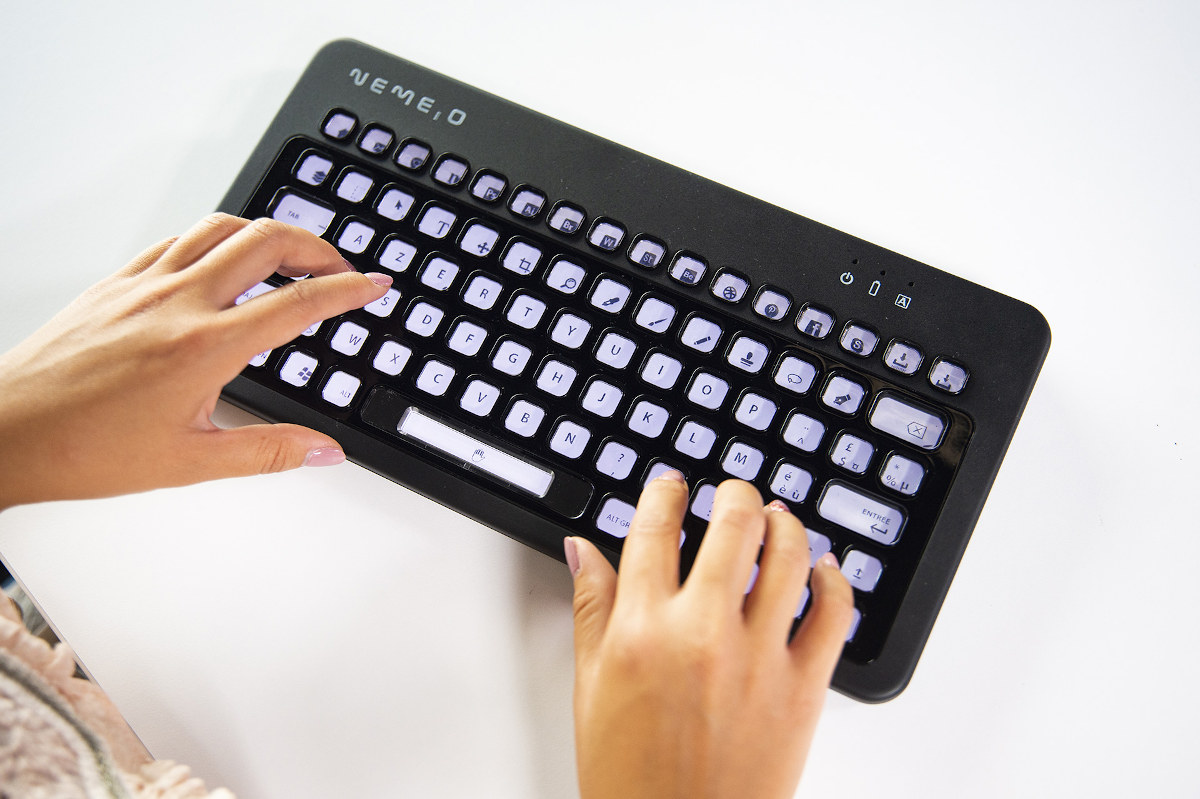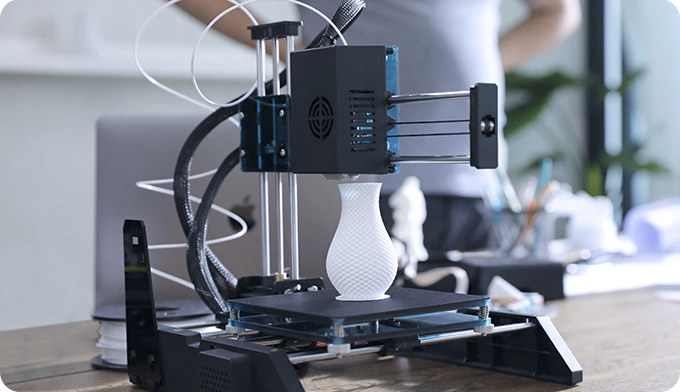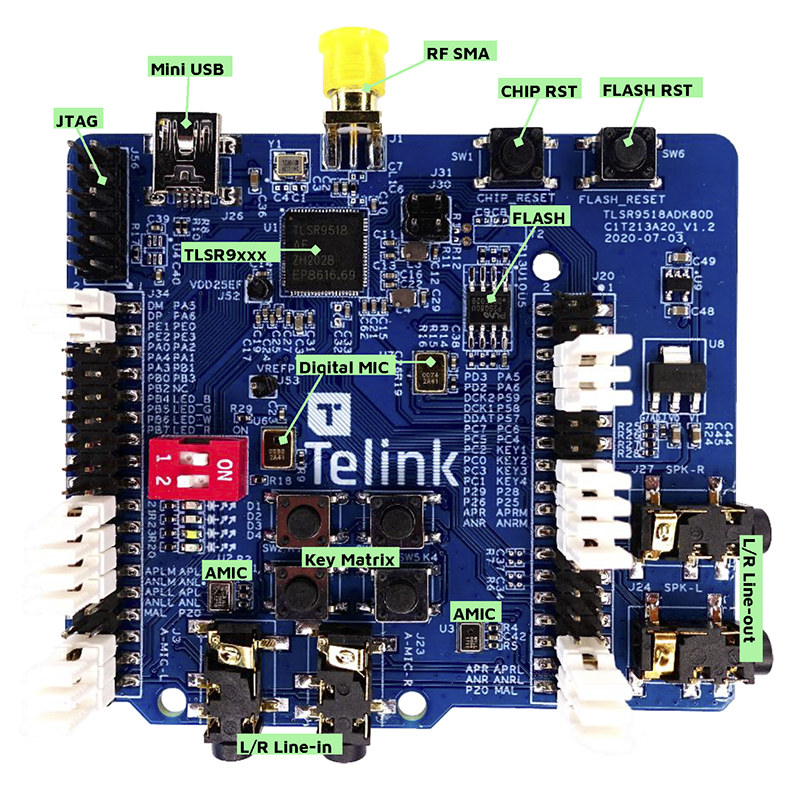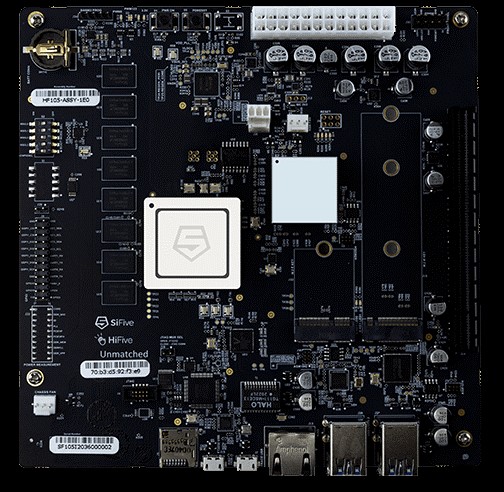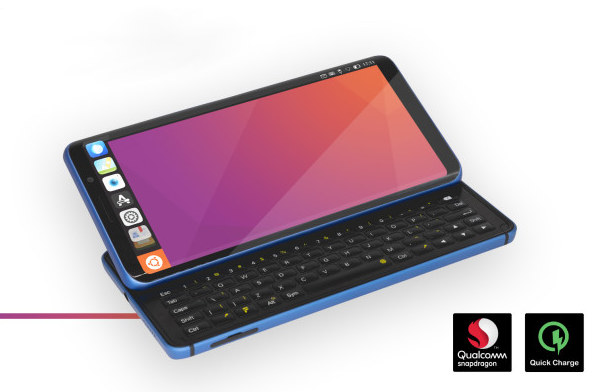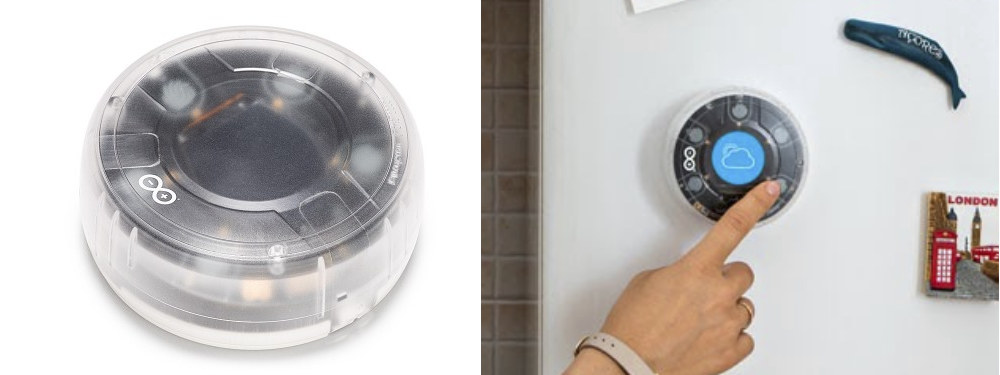I remember in my younger years, I had an international student meeting at university, and when students went to the computer room, all I could hear were complaints about that stupid AZERTY keyboard. Later on, I also did some English to French translation work with a Thai/English keyboard, and it was a pain for some of the characters. So would it be nice if there was a keyboard that could easily be reconfigured to match whatever layout you’d like to work with? That keyboard now exists. Meet Nemeio, a true international keyboard, that can be customized thanks to ePaper keys. Nemeio comes with 81 mechanical transparent keys, backlight (since ePaper display can’t be seen in the dark), Bluetooth connectivity, as well as a USB-C for charging or connection to your PC via USB instead of Bluetooth, a USB Type-A port to charge other devices, a power on/off button, and two […]
Selpic Star-A is a low-cost, compact 3D printer and laser engraver (Crowfunding)
$99 3D printers are announced nearly every year with varying quality, and Selpic, which made the Selpic S1+ handheld 2D printer, joined the fray with Selpic Star-A multi-function 3D printer that was offered as for as little as $99 as an early bird reward on Kickstarter. The 3D printer is still up on Kickstarter with pledges starting at $129 and support for laser engraving for $39 extra, meaning it offers many of the same features as SC-10 SHARK multi-function 3D printer but at a lower price point, a much smaller form factor also meaning a smaller build volume, and slower printing speeds. Selpic Star-A 3D printer specifications: Build volume – 12 x 12 x 12 cm Display – Optional 2.4-inch touch screen Printing materials – PLA, TPU, PETG, ABS Print resolution – >= 0.1 mm Layer thickness – 0.05 to 0.3 mm Printing speed – 30 to 60 mm/s Nozzle […]
CarDongle replaces Android Auto with an Android 9.0 USB computer (Crowdfunding)
[Update Feb 16, 2021: CarDongle used to be called CarDroid, but the company had to change the product name. The rest of the post still uses CarDroid] Many cars now sell with Android Auto support but infotainment systems compatible with Google’s mobile app may have limitations and that’s why we have started to see third-party solutions such as AAWireless adapter to enable wireless Android Auto on more cars. Since Android Auto compatible hardware can’t be easily or cheaply upgraded, CarDroid Innovations has introduced CarDroid USB computer that works with Android Auto but instead runs Android 9.0 on a quad or octa-core Cortex-A53 processor clocked at up to 2.0 GHz with improved performance and access to more apps. CarDroid specifications: SoC – Unnamed quad or octa-core Cortex-A53 processor @ 2.0 GHz (Likely Amlogic S912 octa-core processor, advertised at 2.0 GHz, but whose real max frequency is 1.5 GHz, and maybe Amlogic […]
Telink TLSR9 Wireless Audio & IoT RISC-V SoC integrates RISC-V DSP/SIMD P-extension
At the end of last month, there was a lot of buzz about Bouffalo BL602, one of the first RISC-V SoC with built-in wireless connectivity, namely WiFi 4 and Bluetooth 5.0 LE. We should expect more and more of those types of solutions, and Telink & Andes jointly introduced TLSR9-series of wireless audio chips for hearables, wearables, and other high-performance IoT applications. The chips are powered by an Andes D25F RISC-V 5-stage core that happens to be the first core to integrate RISC-V DSP/SIMD P-extension and offer Bluetooth 5.2, Zigbee 3.0, HomeKit, 6LoWPAN, Thread, and/or 2.4 GHz proprietary protocol. The press release focuses on the Andes core, but an article in Chinese allows use to find more about Telink TLSR9 family’s key features: CPU – Andes D25F 32-bit RISC-V 5-stage core @ up to 96 MHz (2.59 DMIPS/MHz and 3.54 CoreMark/MHz) with RISC-V DSP/SIMD P-extension Optional NNU – AI engine […]
Precursor is a mobile, open hardware, dual FPGA development kit (Crowdfunding)
Sutajio Ko-usagi PTE LTD has launched some interesting hardware on Crowd Supply over the years include Novena open-source hardware Arm laptop, and Fomu FPGA USB board. The company is now back with another project: Precursor, a mobile, open-source hardware devkit powered by not one, but two FPGA with Xilinx Spartan 7-Series FPGA, plus a super-low-power Lattice iCE40 UP5K FPGA for deep-sleep system management. The device also comes with a display, battery, and keyboard that make it looks like older Palm or Blackberry phones. Precursor FPGA devkit specifications: FPGA Xilinx XC7S50 primary System on Chip (SoC) FPGA with -L1 speed grade for longer battery life; tested with 100 MHz VexRISC-V, RV32IMAC + MMU, 4k L1 I/D cache Lattice Semi iCE40UP5K secondary Embedded Controller (EC) FPGA for power, standby, and charging functions; tested with 18 MHz VexRISC-V, RV32I, no cache System Memory – 16MB external SRAM Storage – 128MB flash Display -536 […]
SiFive launches HiFive Unmatched mini-ITX motherboard for RISC-V PC’s
When it comes to RISC-V based SoC, SiFive has always set a benchmark in the RISC-V ecosystem. On 29th October 2020, SiFive confirmed the first-ever RISC-V PC. After an increased demand for AI-focused RISC-V microarchitecture, targeting all applications from artificial intelligence, the internet of things, high-performance computing, and now even desktop PCs. SiFive Freedom U740 powered HiFive Unmatched mini-ITX motherboard comes with a complete development environment which allows developers to create RISC-V based applications from bare-metal to Linux-based systems. “HiFive Unmatched ushers in a new era of RISC-V Linux development with a platform in a PC form factor. Powered by the SiFive Freedom U740, a high-performance multi-core, 64-bit dual-issue, superscalar RISC-V processor.”, SiFive says. It is the world’s fastest native RISC-V development platform. SiFive HiFive Unmatched Board At the heart of the SiFive board is a SiFive FU740 processor coupled with 8 GB DDR4 memory and 32 MB SPI Flash. It […]
F(x)tec Pro1 X smartphone runs LineageOS or Ubuntu, features a sliding keyboard (Crowdfunding)
F(x)tec Pro1 Android smartphone was introduced last year with the main differentiating features being its sliding keyboard. The company also mentioned support for Android-based LineageOS as well as Sailfish OS, but those need(ed) to be installed by the user. FX Technology has now unveiled F(x)tec Pro1 X smartphone with similar specs, except for the blue case and the option of having additional memory and storage, as well as official support for LineageOS and Ubuntu Touch thanks to a collaboration with XDA. Another difference is the availability of Scandinavian and AZERTY keyboard layouts F(x)tec Pro1 X specifications: SoC – Qualcomm Snapdragon 835 (MSM8998) octa-core Kryo 280 processor with 4x higher performance cores @ 2.45 GHz, 4x low-power cores @ 1.9 GHz, Adreno 540 GPU System Memory – 6GB or 8GB LPDDR4 Storage – 128GB or 256GB flash, MicroSD card up to 2TB Display – 5.99-inch 2160 x 1080 (FHD+) AMOLED display with […]
Oplà IoT Kit is Arduino’s first open programmable IoT platform
Arduino is well-known for its maker boards and shields that are sometimes sold as part of kits to experiment with electronics. Arduino Oplà IoT kit is a little different as it looks more like an actual consumer product once assembled. Powered by an Arduino MKR WiFi 1010 board, it is designed to make getting started with IoT easy for beginners, while still allowing more advanced users to customize and hack their smart home applications. Arduino Oplà IoT Kit is comprised of several hardware components: MKR IoT carrier with a 1.2-inch OLED color display, onboard environmental sensors (temperature, humidity, pressure, light, and proximity), IMU sensor, Grove connectors, two 24V relays, and five capacitive touch buttons. Arduino MKR WiFi 1010 board powered by Microchip SAMD21 Cortex-M0+ MCU and equipped with a 2.4 GHz WiFi 4 and Bluetooth 4.2 module based on ESP32 chip. Sensors – PIR motion sensor and moisture sensor A […]


